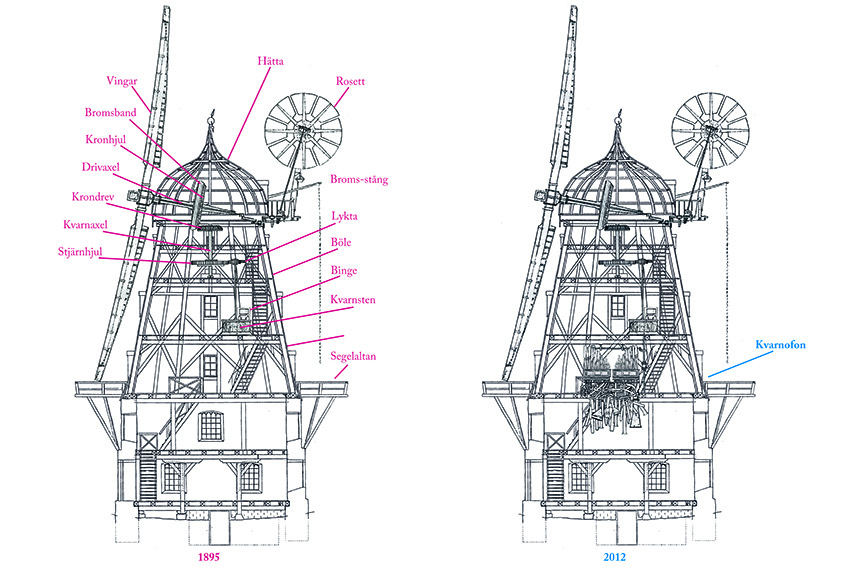STÜCK FÜR KVARNOFON UND CHOR / MIKAEL ERICSSON / 2014
Performance at Harp Art Lab, Sweden
Mikael Ericsson and Amici del Canto in a memorable Mash Up between Liszt and Stockhausen. The event took place at Harp Art Lab Sweden when the inventor of Millophonia, Mikael Ericsson, scratched slowly with a deconstructed Franz Liszt piano roll over a song by Karlheinz Stockhausen, beautifully performed by Amici del Canto from Wuppertal, Germany.
Kvarnofonen / Millophonia is a site specific sound installation in Harp Art Lab windmill by Mikael Ericsson. The sails, of the windmill, are running two enormous bellows that are supplying a modified pipe organ with air. The sound is controlled by a pneumatic mechanism that operates the pipe organ action via piano-rolls that are preprogrammed by the artist. This procedure is 100% handmade by cutting, punching and stitching it all together to feed Millophonia with fresh sound art.
The Chamber Choir Amici del Canto, was founded in 2008 in Wuppertal and dedicates mainly to sophisticated a-cappella-literature of all epochs. At present, the choir amici del canto consists of some thirty ambitious singers from the Region Bergisches Land, both, professional school and church musicians.
MILLOPHONIA - since 2012
Millophonia is a site specific sound installation in Harp Art Lab windmill by Mikael Ericsson. The sails, of the windmill, are running two enormous bellows that are supplying a modified pipe organ with air. The sound is controlled by a pneumatic mechanism that operates the pipe organ action via piano-rolls that are preprogrammed by the artist. This procedure is 100% handmade by cutting, punching and stitching it all together to feed Millophonia with fresh sound art.
The machinery is connected to a self playing pipe organ that produces sounds from the energy generated by the wind. The energy is then transferred into a series of bellows that are blowing air into hundreds of organ pipes. The sound is controlled by a pneumatic mechanism that operates the pipe organ action via pre-programmed piano rolls of perforated papers. The first self playing piano was invented around 1895, the same year as Harplinge Windmill was built.
The windmill is one of the largest "smock mills" in Northern Europe, and serves as an important landmark for the small village of Harplinge on the Swedish West coast.
The project is conducted by Harp Art Lab - a laboratory for contemporary art located in Harplinge windmill on the Swedish westcoast.
The project is supported by: Kulturbryggan, Stiftelsen Framtidens Kultur och Längmanska Kulturstiftelsen.
